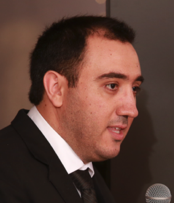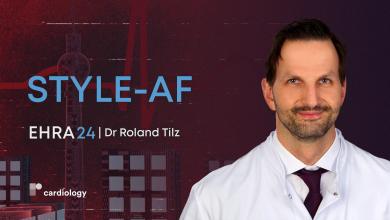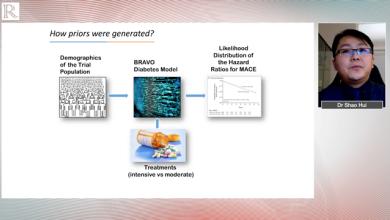Search results
Author(s):
Stuart J Beldner
,
Francis E Marchlinski
Added:
3 years ago
Accessory pathways are formed embryologically during cardiogenesis and may be broad, slanted, and occasionally particularly challenging to ablate. Right-and left-sided pathways are derived differently with right-sided pathways characteristically subendocardial as opposed to subepicardial. Successful ablation of right-sided pathways is frequently limited by catheter stability and ablation attempts…
View more
Author(s):
Stuart J Beldner
,
Francis E Marchlinski
Added:
3 years ago
Accessory pathways are formed embryologically during cardiogenesis and may be broad, slanted,1 and occasionally particularly challenging to ablate. Right-and left-sided pathways are derived differently with right-sided pathways characteristically subendocardial as opposed to subepicardial.2 Successful ablation of right-sided pathways is frequently limited by catheter stability and ablation…
View more
Halim Yammine
Job title: Vascular Surgeon
Author
Author(s):
Eden C Payabyab
,
Lindsay S Elbaum
,
Navneet Sharma
,
et al
Added:
2 years ago
Author(s):
Harry Crijns
,
Elton Dudink
,
Nikki Pluymaekers
Added:
5 years ago
Prof Harry Crijns (Maastricht University Medical Center, Maastricht, NL) discusses the 'Wait-and-See versus Acute Cardioversion trial in Recent-Onset AF patients' with his colleagues Dr Elton Dudink and Dr Nikki Pluymaekers who conducted the trial.
Filmed on site at EHRA 2019 by Radcliffe Cardiology
Questions:
1. What is the rationale for this study?
2. What was the design of the trial?
3…
View more
Author(s):
Roland R Tilz
Added:
3 days ago
EHRA 24 - We are joined onsite by Dr Roland Tilz (University Heart Center, DE) to discuss the findings of the Style-AF study (NCT05563142).This prospective, randomized, controlled study aims to compare the safety and efficacy of the Perclose ProStyle suture-medicated closure device to manual compression for the treatment of hemostasis after single-shot-device pulmonary vein isolation (PVI). 125…
View more
Author(s):
David N Kenigsberg
,
Ken Ellenbogen
Added:
3 years ago
Atrial fibrillation (AF) is a common and recurrent arrhythmia resulting in significant morbidity and mortality. Our approach to the patient with AF has changed dramatically over the past decade. We have gone from palliating patients with rate controlling medications or administering antiarrhythmic medications with potential systemic side effects and proarrhythmia, to now curing many of them with…
View more
Author(s):
Jane A Leopold
Added:
1 year ago
TCT 22 - Dr Jane Leopold (Brigham & Women’s Hospital, US)joins us to discuss the precision medicine approach in the cardiovascular field of medicine. In this insightful video, she discusses the data supporting the precision medicine approach, specific examples of this approach in cardiovascular medicine.
Questions:
1. What is precision medicine?
2. Could you outline some examples of the…
View more
Author(s):
John M Miller
,
Anil V Yadav
Added:
3 years ago
In the nearly 30 years since Wellens et al. categorized most of the currently used electrocardiographic (ECG) criteria for distinguishing supraventricular tachycardia (SVT) with aberrant interventricular conduction from ventricular tachycardia (VT),1 there have been relatively infrequent and largely incremental enhancements to the art and science of making this distinction. In most published…
View more
Added:
3 years ago
Dr Shao Hui (University of Florida, Florida, US) discusses the rationale and methods behind a Bayesian interpretation on whether intensive glycaemic control can reduce major adverse cardiovascular events (MACE) using data in long-term clinical trials (e.g. ACCORD and VADT).
Questions:
1. What is the rationale behind this analysis?
2. What were the methods of this analysis?
3. What were your…
View more















 « First
« First